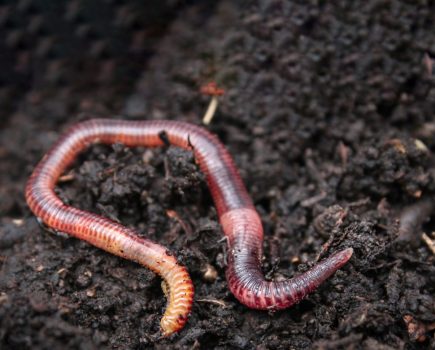Curiously gruesome in behaviour, parasitoid wasps are often coined the body snatchers of the insect world. CPM shines a spotlight on this fascinating group of beneficial insects.
“Parasitoid wasps are a much-overlooked apex predator.” – GAVIN BROAD
By Janine Adamson
With all the will in the world, it can be difficult to look favourably on a certain striped creature, particularly when they’re dive-bombing a summer picnic, flying head-first into a pint of cold cider, or delivering an angry sting.
However, among the 7000 species of wasp found in the UK, the majority are in fact parasitic, or parasitoid – a group of small insects which are mostly harmless to humans, says Natural History Museum’s wasp specialist, Dr Gavin Broad.
“Lots of different looking insects are classed as a wasp – there’s huge diversity within the group and they often don’t look alike. Parasitoid wasps in particular play a significant role in ecosystem management, parasitising and thereby controlling a wide range of hosts including agricultural insect pests,” he explains.
Contrary to the renowned striped black and yellow social type, the majority of parasitoid wasps are very small – some less than 1mm in length – with certain species even jewel-like in appearance. But, what they all have in common is their general behavioural style, highlights Gavin.
MODE OF ATTACK
The adult wasp lays their egg on or inside the host, with the then hatched larvae consuming and killing it. Similar to other pollinators, most adults feed on nectar, pollen and honeydew, although some also feed on a host, consuming bodily fluids.
According to Gavin, caterpillars are a common target for parasitoids, as are beetle and fly larvae. “Whereas specialist groups attack aphids because they’re a very nutritious food source.
“Interestingly, you can observe a ‘Russian doll’ effect whereby certain parasitic wasps parasitise each other, with up to five levels of wasp feeding off a single aphid. This is complicated further, as we know aphids have telescoping generations, so give birth to live young whose offspring already have their young inside them.”
He says parasitoid wasps are highly clever in the level of control they exert over their host. “It’s very much a symbiotic relationship, with the wasps a much-overlooked apex predator.”
AHDB’s lead crop protection scientist, Dr Sacha White, says when it comes to an agricultural setting, for every crop pest there’s likely to be a parasitoid species ready and waiting.
“It’s reasonably easy to identify an aphid that’s been parasitised – they gain a silky coat and are almost mummified. It’s certainly something to look out for, particularly in the spring and summer when activity levels are high.”
He says even where aphid pressure is extreme, within weeks a population can be heavily parasitised by wasps. “Defra’s pest survey has started to monitor beneficial insects in the spring and autumn. This has already noted significant numbers of mummified aphids even late into the autumn.”
Aside from aphids, other arable pests controlled by parasitoid wasps include orange wheat blossom midge, frit fly, cabbage stem flea beetle (see box), seed weevil and pollen beetle. However, understanding how to encourage parasitoid activity is still a work in progress, suggests Gavin.
“It’s a very under-studied and under-monitored area – we’re having to work hard to build basic datasets and understand behavioural traits. What we do know is, they require a healthy population of hosts.”
GIVE AND TAKE
Given farmers are aiming to eradicate crop pests rather than encourage them, could this be perceived as counterproductive? With this in mind, Sacha points out it doesn’t have to be a binary choice.
“With any natural enemy there’s always a lag in activity, it isn’t an instant fix. There has to be time for the parasitoid wasp to be attracted to an aphid colony, for example, to lay their eggs and for the larvae to kill the host.
“The impact of this lag all depends on what you’re growing and at what point that crop is at within its life cycle. Consequently, there’s potential scope to be more tolerant of the delayed effect beneficials can exert,” he stresses.
To illustrate further, Sacha provides the example of BYDV in winter cereals: “Crops can get to a point in the summer where infection no longer impacts yield. Equally, if natural enemies are indeed active in the autumn and slow down aphid activity, it should also reduce the amount of crop infected with BYDV.
“Unlike fresh produce crops where appearance impacts marketability, cereals and oilseeds can tolerate a good level of pest damage before yield is affected. So in some ways, it’s okay to have pests if it means we can also foster those natural enemies.”
As with most beneficials, parasitoid wasps are susceptible to insecticides, particularly pyrethroids. “In OSR this means if you’re spraying for CSFB beetle but there’s resistance, the beetles won’t die but the wasps will,” warns Sacha. “Crop management also plays a role – some parasitic wasp pupae develop in the soil, so tillage will impact their survival, as confirmed by work conducted by Rothamsted Research.”
Gavin adds that fragmented habitats don’t help either, whereas providing linkages across farm between refuges is a key factor in promoting all types of biological control.
And as with most creatures in nature, climate change is a critical factor. “New species of parasitoid wasp seem to be appearing in the UK as temperatures increase,” comments Gavin.
“Presumably this is because their host insects are colonising, or in some cases, because hosts have longer and more generations per year thanks to the warming climate. Warmer conditions can also mean species which were southerly now have more warm weather for active host searching, and better conditions for overwintering.”
At a global scale, proactive interventions have taken place using parasitoid wasps to save key crops. Examples include overcoming mealybugs in African cassava and wheat stem sawfly in North American cereals, adds Gavin.
Whereas more locally in the UK, companies are already established which rear colonies for use as biological control in glasshouse crops such as tomatoes.
But whatever the desired outcome, it’s all about the host-predator interaction, says Sacha. “Parasitoid wasps are very in-tune with the life cycle of their target, therefore, they’re a highly effective natural enemy,” he concludes.
This article was taken from the latest issue of CPM. Read the article in full here.
For more articles like this, subscribe here.
Sign up for Crop Production Magazine’s FREE e-newsletter here.




